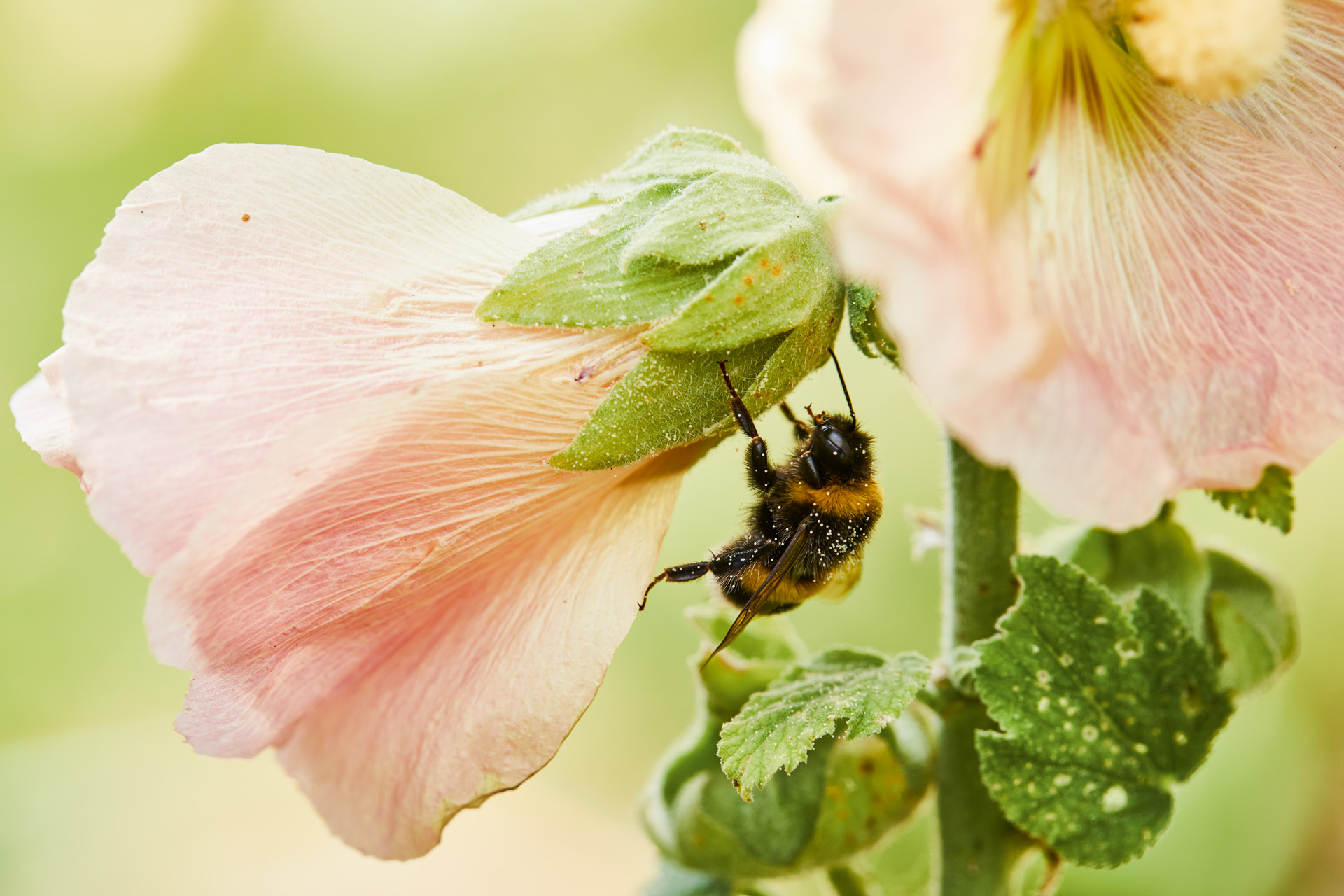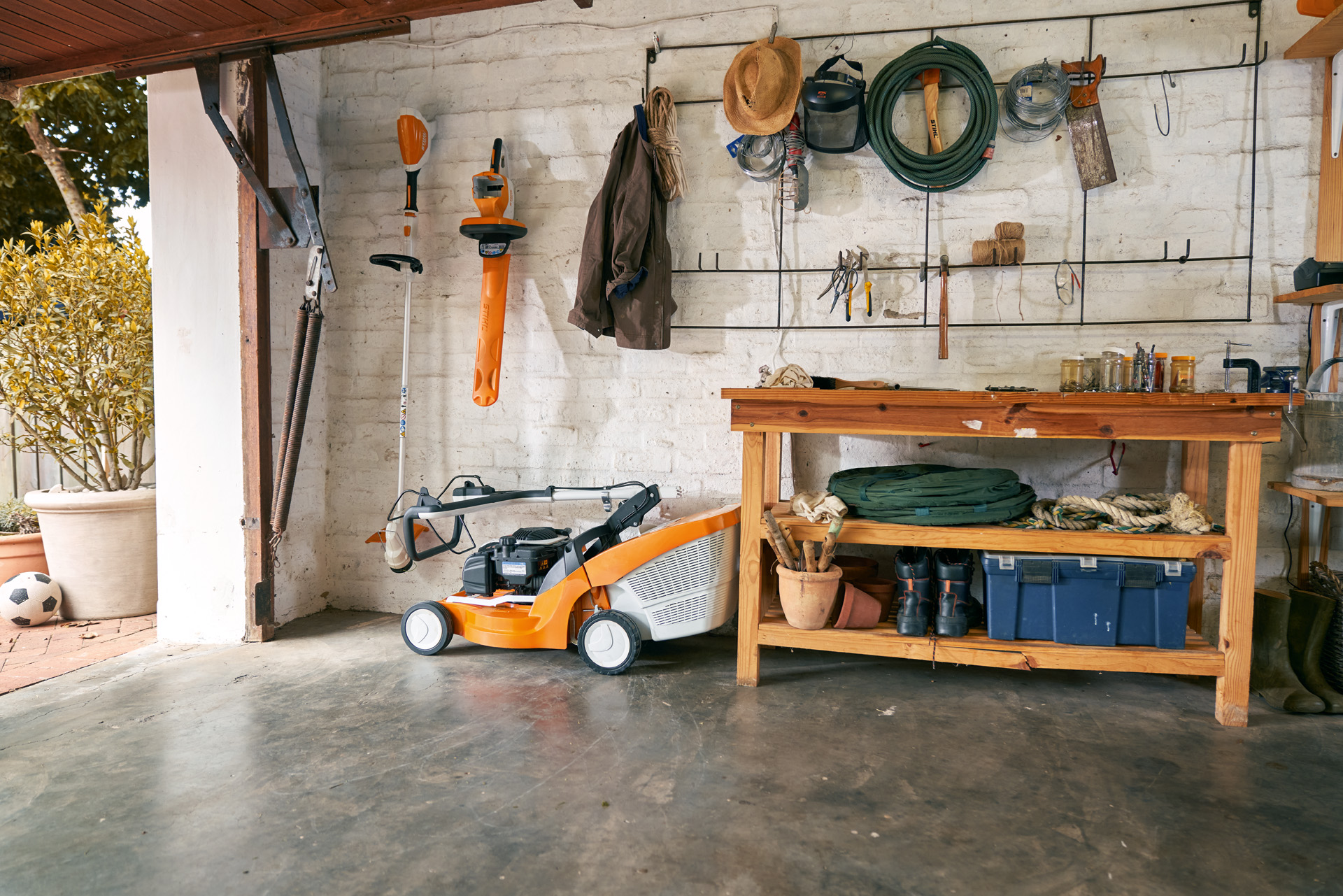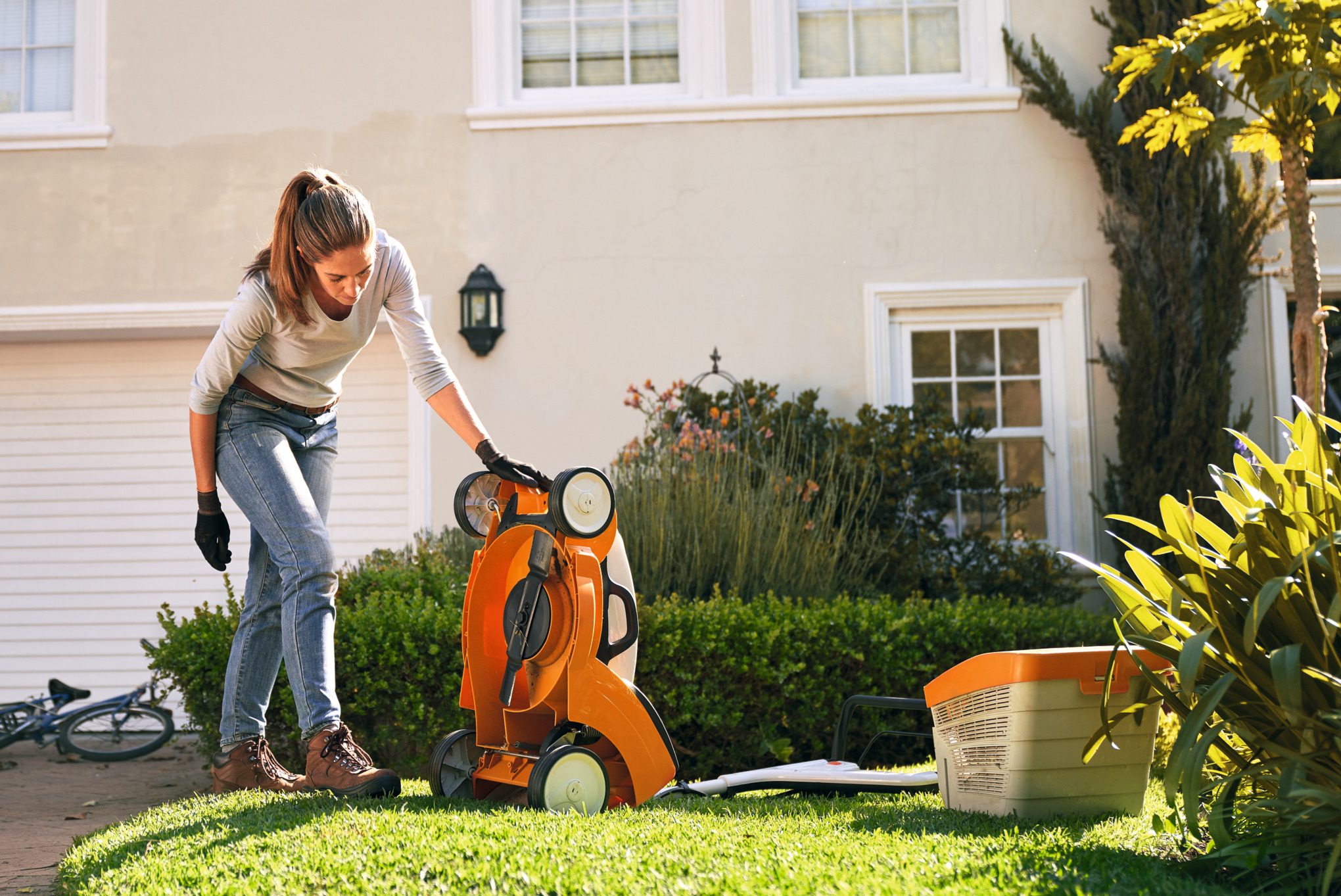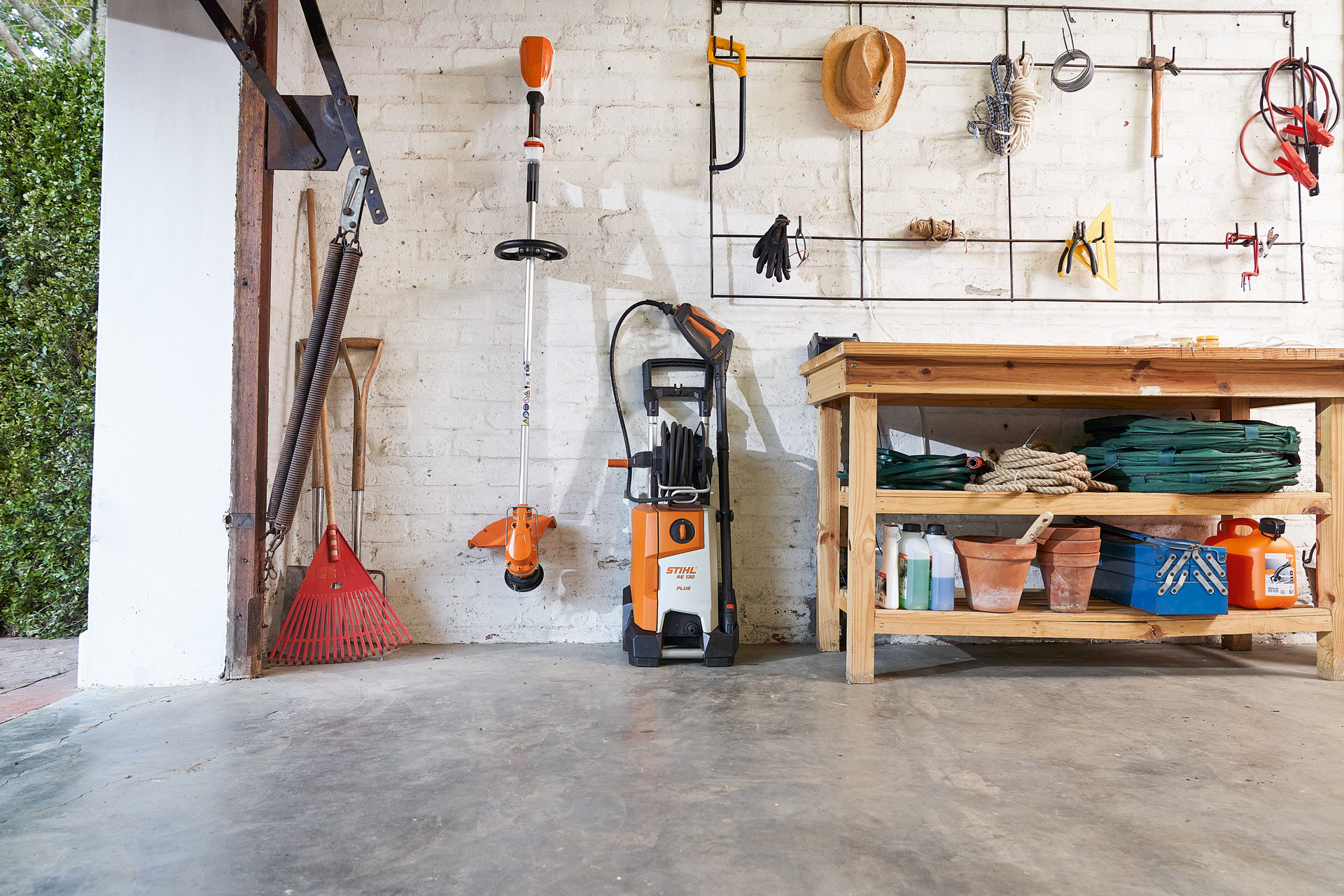Winter Gardening: Practical Tips for a Thriving Garden
As temperatures drop and plant growth slows, winter is the perfect time to focus on garden care and preparation. Use the cooler months to tidy, maintain and set your garden up for a productive season ahead. With the right tools and a little planning, winter gardening can be simple and rewarding.
21.07.2025

- Preparing and Protecting Your Garden for Winter
- Looking After Your Garden Tools
- Winter Lawn Care Tips
- Making the Most of Autumn Leaves
- Winter-Flowering Plants for Colour and Life
- Monthly Winter Gardening Checklist
- Caring for Fruit Trees and Harvesting Winter Vegetable Beds
- Maintaining Ponds and Water Features
- Essential Winter Gardening Summary
Preparing and Protecting Your Garden for Winter
Many plants become dormant during winter, but a little attention now will give them a stronger start in Spring. Move frost-sensitive potted plants into sheltered spaces such as patios, verandahs, or greenhouses. Wrap containers with hessian or garden fleece to insulate the roots.
Apply organic mulch like straw, bark or sugarcane to garden beds to retain moisture, suppress weeds, and stabilise soil temperatures.

Looking After Your Garden Tools
Winter is an ideal time to clean, inspect and safely store garden tools. Remove grass and sap from your hedge trimmers, chainsaws, blowers and lawn mowers. Check blades for wear and sharpen where needed.
For battery tools, remove batteries and store them in a cool, dry place. All tools should be stored in a sheltered, well-ventilated space to extend their lifespan and ensure they are ready to go when needed.
Winter Lawn Care Tips
Lawn growth slows in winter, but a little maintenance will keep your turf healthy and looking its best through the cooler months. Start by keeping the lawn clear of leaves, twigs and garden debris. This helps reduce the risk of fungal growth and allows light and air to reach the grass. A rake or STIHL blower is ideal for staying on top of this job.
In many areas, frosts are light or occasional, but it is still best to avoid walking on the lawn early in the morning if it feels crisp underfoot. Stepping on frosty or waterlogged grass can bruise the blades, which may lead to patchy or yellowing areas as the weather warms up.
If you use a hose or irrigation system, reduce watering frequency as evaporation slows and natural rainfall increases. Store any unused watering equipment in a clean, dry space to keep it in good condition.
This is also a great time to check and clean bird boxes. Remove any old nesting material and give them a rinse with boiling water. Fresh, clean boxes can offer welcome shelter for birds during cold nights.
With just a small amount of care, your lawn will stay in great condition and be ready for new growth when spring arrives.
Making the Most of Autumn Leaves
Autumn leaves are more than just garden litter — they are a valuable resource. Rather than removing them completely, use dry leaf matter as natural mulch to help protect garden beds and shrubs during the cooler months. A thick layer of leaves helps retain soil moisture and shields plant roots from cold and wind.
Young or tender plants benefit most from this protective layer. Under established shrubs, you can apply leaf mulch five centimetres deep or more. If windy conditions are a concern, simply top the leaves with a light layer of soil or compost to help hold them in place.
Hardy herbs such as thyme and lavender may benefit from an additional layer of protection. A light covering of fine prunings or soft garden offcuts can help reduce moisture loss and protect against drying winter winds.
For roses, remember the grafting point just below the soil surface can be vulnerable in cold conditions. Mound a small amount of soil over the base, or use organic mulch to insulate the area and help prevent damage.

Winter Flowering Plants for Colour and Life
Winter may be quieter in the garden, but it does not have to be dull. Many well-known backyard favourites flower through the cooler months, adding colour, texture and life to outdoor spaces. These reliable winter bloomers not only brighten your garden but also support local birdlife and pollinators.
Grevillea
A favourite in many Australian gardens, grevilleas produce bold, nectar-rich flowers throughout winter. They are low-maintenance, drought-tolerant and ideal for attracting birds.
Camellia
Sasanqua and japonica camellias are winter standouts, offering glossy green foliage and elegant flowers in shades of pink, red and white. They thrive in part shade and perform well in cooler climates.
Kangaroo Paw
Known for their distinctive flowers and upright form, kangaroo paws bring vibrant reds, oranges and yellows to garden beds and pots. Many varieties bloom well into winter, especially in mild regions.
Banksia
These hardy native shrubs and trees produce striking cone-shaped flowers, often through winter. Banksias are excellent for attracting nectar-feeding birds and are suited to low-water gardens.
Lavender
While not native, lavender is a popular and practical backyard choice. Many varieties continue flowering into winter, providing colour and fragrance, as well as food for bees.
Correa (Native Fuchsia)
This compact native shrub produces bell-shaped flowers in pink, red or green tones through winter. It thrives in a variety of soils and is a great option for low-maintenance native gardens.
Alyssum
A fast-growing ground cover that produces masses of tiny flowers in winter and spring. It is easy to grow, ideal for edging, and attracts beneficial insects.
Planting a mix of these winter performers ensures your garden stays bright and inviting, even during the coldest months. They also help maintain garden structure and provide important habitat and food sources for local wildlife.

Monthly Winter Gardening Checklist
June
- Mulch garden beds and tree bases
- Prune dormant ornamental trees and shrubs
- Harvest cold-tolerant crops like kale and leeks
July
- Prune rose bushes and fruit trees
- Plant bare-rooted trees, shrubs and roses
- Remove weeds and refresh soil in garden beds
August
- Sow seeds indoors for spring crops such as tomatoes and capsicum
- Sprout seed potatoes in a bright, sheltered spot
- Fertilise citrus trees ahead of fruit development
Winter Gardening Jobs: What to Focus On
While winter slows growth in the garden, it is still a productive time for maintenance and protection. Taking a few simple steps now will ensure your plants remain healthy and your garden is ready to thrive come spring.
Hardy potted plants such as agapanthus, clivia, cordyline and rosemary can usually remain outdoors in most climates. If they are positioned near walls or under eaves, they are naturally protected from cold winds and heavy rain. For added protection in cooler regions, cover pots with hessian or frost cloth, or move them into a sheltered spot if a cold front is forecast.
Winter is also the ideal time to tend to your rose beds. Add a layer of compost, aged manure or mulch around the base of each plant to insulate the grafting union and suppress weeds. Keep mulch clear of the stems to prevent rot.
Woody plants like lilly pilly, westringia, viburnum and native grasses are typically hardy, but those grown in containers may dry out more quickly. Protect pots by placing them on timber slats or bricks and wrapping them with hessian or breathable fabric. Even in winter, remember to water on dry days, especially for evergreen varieties, which continue to transpire through the cooler months.
Avoid cutting back all withered growth just yet. Stems on perennials such as salvia and echinacea offer a natural form of protection and also provide shelter for beneficial insects. However, softer plants like kangaroo paw, canna lilies and coleus may break down and rot in wet conditions — these should be trimmed back to just above ground level.
If you have ornamental grasses like lomandra, poa or dianella, they may benefit from a tidy-up to remove older leaves, but avoid cutting too low. For pampas grass or other large clumping varieties, gather and tie the leaves to form a tent-like structure. This helps prevent moisture from pooling in the crown and reduces the risk of fungal issues.
Completing these tasks during winter will help strengthen your garden and set the stage for a vibrant growing season ahead.

Caring for Fruit Trees
Winter is the best time to prune deciduous fruit trees. Remove dead, damaged or overlapping branches to encourage healthy new growth. Always use sharp, clean tools to reduce the risk of disease.
Clear away any fallen leaves or old fruit from beneath trees. This helps prevent pests and fungal issues in the months ahead. Avoid composting diseased material and dispose of it appropriately.

Growing and Harvesting Winter Vegetable Beds
Winter is a productive time in the veggie patch, with many cool-season crops continuing to grow and provide fresh harvests. Vegetables such as silverbeet, kale, broccoli, cauliflower, carrots and leeks all thrive in lower temperatures and are ideal for picking throughout winter.
If you planted leeks, spinach or garlic earlier in the season, you can continue harvesting them as needed. These crops do well in cooler conditions and hold their quality in the ground. In most regions, there is no need for frost covers, but in colder areas or exposed gardens, a light fleece or layer of straw mulch can offer added protection and help maintain even soil temperatures.
For easier access and a steady supply, you can also lift and relocate some of your maturing vegetables. For example, dig up a few leek plants with their root systems intact and replant them into a large pot or tub with good drainage. Keep the container in a sheltered spot near the kitchen or back door, and you will have easy access to fresh produce without stepping into the garden on wet days.
Remember to check any stored root vegetables, such as potatoes or pumpkins, for signs of mould or soft spots. Remove any damaged produce promptly to prevent spoilage from spreading to the rest.
Winter is the ideal time to rejuvenate tired or woody plants. Before pruning back hard, tie stems together with garden twine or rope. This not only makes the task neater, but also makes cleanup and disposal easier.
Many native and well-established garden favourites can be propagated from hardwood cuttings during the cooler months. Plants like grevillea, callistemon (bottlebrush), correa, westringia, banksia and lavender all respond well to winter propagation when taken from firm, healthy growth.
Select pencil-thick stems from last season’s growth and cut each piece to about the length of your secateurs. Each cutting should have a healthy node (or bud) near the top and base. Make a clean cut just below the lower bud and a slanted cut above the top bud so you can tell which end is up.
Insert the cuttings into a coarse propagation mix, sand, or a free-draining spot in the garden with dappled shade. Keep the soil moist but not wet, and be patient — native plants often take longer to root than exotics, but once established, they are hardy and rewarding.
Look out for signs of new growth in spring, which means the cutting has successfully taken and is ready for potting up or planting out.

Maintaining Ponds and Water Features
Winter is a good time to tidy and maintain ponds and water features while plant growth is slower. Keeping things clean and well-balanced now helps reduce algae build-up and sets the stage for a healthy pond heading into spring.
Trim back spent or damaged foliage from common pondside plants such as lomandra, dianella, baumea, and juncus (rushes). These hardy native grasses and reeds are often used around ponds for structure and erosion control. Prune with long-handled secateurs or shears, taking care not to disturb the roots near the water’s edge.
Remove fallen leaves and organic debris from the surface of the water and surrounding area. This helps prevent nutrient build-up, which can cause algae blooms. A STIHL blower makes quick work of clearing leaves from pond edges and nearby paths.
If your pond contains native fish such as Pacific blue-eyes or Australian rainbowfish, ensure water circulation is maintained. A small pond pump or aerator will help oxygenate the water during cooler months when natural activity slows. Without a pump, regular removal of decaying material becomes even more important to keep water quality high.
Algae can still appear in slow-moving water, even during winter. Remove any build-up using a pond net or manual skimmer. Avoid using harsh chemical treatments that could harm fish or beneficial insects.
With just a little attention over winter, your pond or water feature will stay clean, healthy and visually appealing — ready to support fresh plant and aquatic life as the weather begins to warm.

Essential Winter Gardening Summary
- Move and protect sensitive potted plants
- Apply mulch around beds and trees
- Prune roses, fruit trees and deciduous shrubs
- Clear lawns and garden beds of fallen leaves
- Clean and service your garden tools
- Sow spring crops indoors and sprout seed potatoes
- Add structure and colour with winter-flowering plants
- Remove old fruit and leaves to reduce disease risk
- Maintain water features by clearing debris and checking equipment





